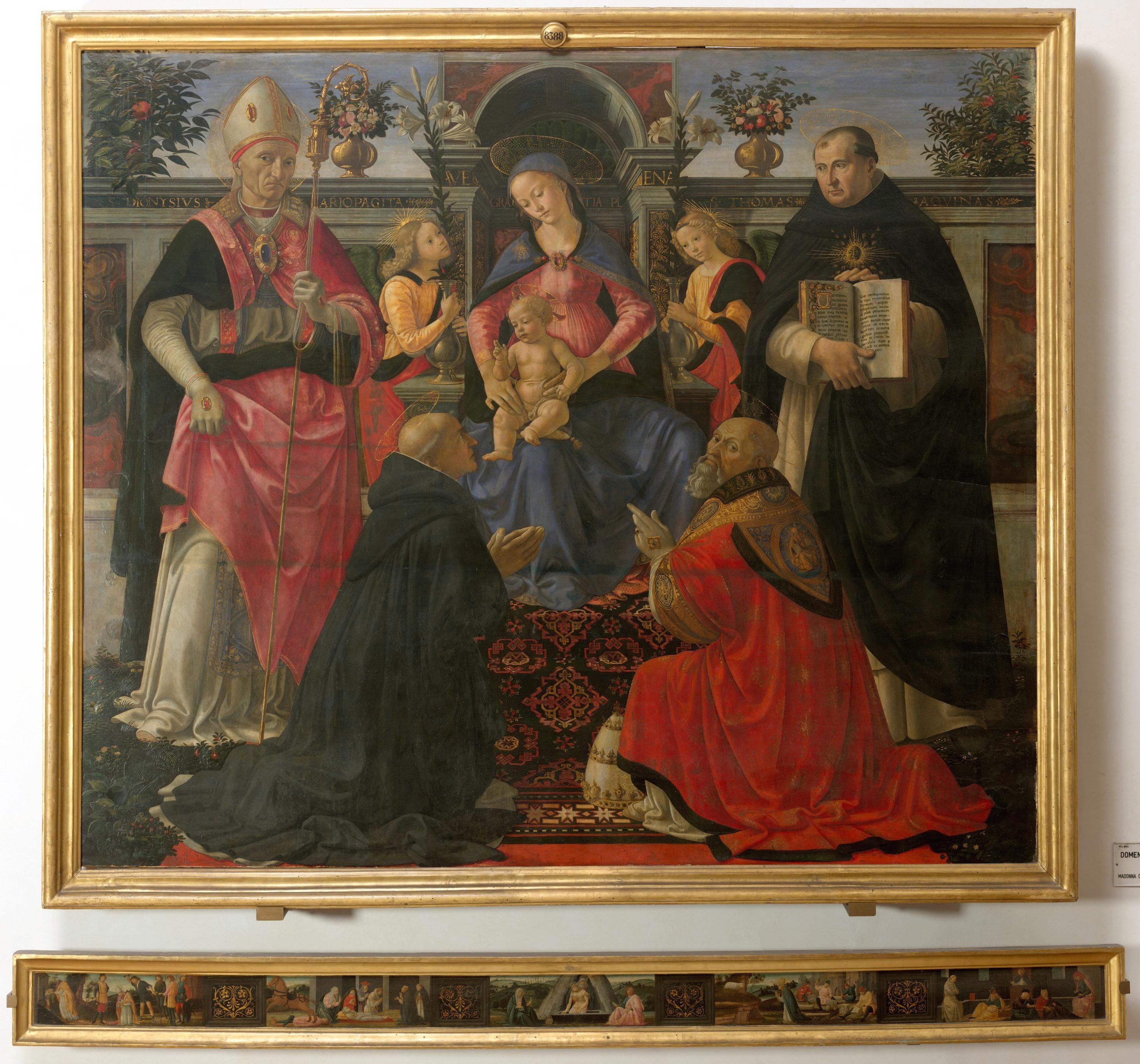Madonna and Child enthroned with Saints Dionysius the Areopagite, Dominic, Clement, Thomas Aquinas and angels
Domenico and Davide Ghirlandaio (Florence, 2 June 1448 - Florence, 11 January 1494)
The scene takes place in a space delimited by a marble mirror wall of classical elegance, in which the throne of the Virgin is inserted with the Child in her arms, in the act of blessing. On either side, two child angels hold vases with white lilies, the flowers associated with Mary. The work follows the typical iconography called “sacra conversazione” (holy conversation), with the representation of the Madonna on the throne surrounded by a group of saints. In this case they are identifiable, thanks also to the names inscribed in gold letters on the parapet, of the two closest to the Virgin, most likely executed by the painter's brother, Davide: these are Dionysius the Areopagite, the saint converted to Christianity by the preaching of St. Paul, and Thomas Aquinas, recognisable by the rayed sun on his chest, his attribute and symbol of sacred wisdom. Theologian, philosopher and academic, exponent of the philosophical current called Scolastica, St. Thomas shows the Summa Theologiae, his most famous text. Kneeling in the foreground, almost with his back turned towards the Madonna and Child, is Dominic, the founder of the Order of Preachers, wearing the typical black cloak: his presence in the painting is further proof of its original location in the Dominican church of San Marco in Florence. On the right, also kneeling, is Pope Clement I who, as befits his role, wears a very elegant cope, of red damask silk with an embroidery on the back shield depicting “Moses with the tablets of the law”. St. Clement also as St. Dominic is turning his back, but with a penetrating gaze towards the spectator, and indicates the Saviour with his left hand, almost as if he wanted to invite us to participate in the holy conversation, making himself the mediator between the real world and the divine. Equipped with an excellent technique, a lively palette and a great narrative clarity, Ghirlandaio knows how to combine in his works the Florentine artistic tradition, based on drawing and the study of perspective, with the innovation in colour and analytical description of nature introduced by the Flemish painting, very much in vogue in Florence in the last decades of the 15th century. This explains, also in this altarpiece, the subtlety and precision with which the precious fabrics are described, the brightness of the gems and golds, the Anatolian carpet on which the feet of the Virgin rest, the shiny silver vases resting on the balustrade and finally the natural elements, the plants: roses, Mary's flowers; orange and lilies, symbols of virginal purity; finally the pomegranate, in this case allegory of the Church, which welcomes and protects the faithful like grains in the skin of the fruit.
